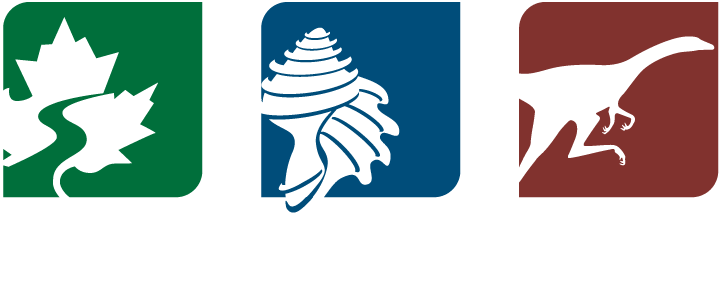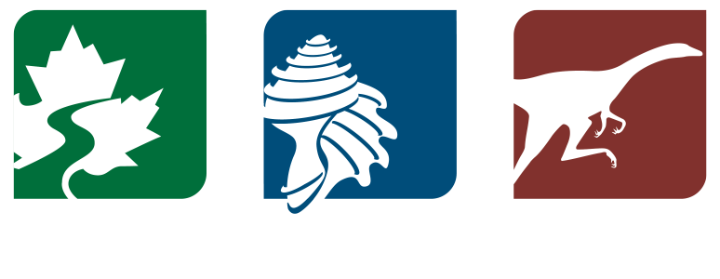William F. Klose II (1939-2024): Remembering a Life-long Collector, Volunteer, and Friend of PRI
by Warren Allmon, Gregory Dietl, and Jonathan Hendricks
Bill Klose holding a plant fossil.
Bill Klose was born in 1939 in San Mateo, California and received his bachelor’s degree in geology from Rensselaer Polytechnic Institute (RPI) in Troy, New York in 1963. He served in the U.S. Navy as a submariner from 1957 to 1970, and worked for Proctor and Gamble in Mehoopany, Pennsylvania from 1970 until his retirement in 1998.
Bill started collecting in the summer of 1950 at age 11 during a vacation to Oregon. Initially he focused on minerals, but his interests gradually shifted to fossils. While in the Navy, Bill continued to collect everywhere he could. When he was stationed in Guantanamo Bay, Cuba, Bill made extensive collections of rare fossil corals that attracted the interest of professional paleontologists. In 1976, Bill began to donate fossil specimens to various institutions, including the Pennsylvania State Museum in Harrisburg, the Reading Public Museum, the Everhard Museum in Scranton, and PRI. Over the past 50 years he gave an estimated 50,000 specimens to PRI. In 1999, PRI presented him with the Katherine Palmer Award for excellence in paleontology by a non-professional.
In 2002, Bill started volunteering in PRI’s Collections Department. The drive from his home in northern Pennsylvania was over 2 hours each way and, weather permitting, he made the trip to Ithaca and back home almost daily. Over the next 20 years, Bill regularly exceeded 1000 hours of time each year volunteering at PRI. In the PRI Collections, Bill used his vast knowledge of both fossil and modern invertebrates to help us organize and sort our research collection. He also spent countless hours identifying and assigning scientific names to individual specimens.
Bill’s donations to PRI included both specimens he personally collected and others that he purchased. All are remarkably well-curated and span all taxonomic groups and geologic ages, providing our research collection with great breadth of coverage. Highlights of some of his fossil collecting interests are shared below.
Fossil Mollusks from California
The mollusk fossils shown below were collected by Bill from the Neogene-aged Purisima Formation (2.6 to 7 million years old) along coastal exposures at Año Nuevo Bay north of Santa Cruz, California. This area is now a state park famous for its breeding colony of northern elephant seals.
Resting elephant seals and Purisima Formation at Año Nuevo State Park in California. Photograph by Jonathan R. Hendricks.
Specimens of the gastropod (snail) Neverita lewisii from the Neogene Purisima Formation at Año Nuevo Bay, California (left, PRI 81919; right, PRI 81921).
Specimens of the bivalve (clam) Tresus pajaranus from the Neogene Purisima Formation at Año Nuevo Bay, California (left, PRI 111608; right, PRI 111609).
Fossil Corals from Guantanamo Bay, Cuba
The fossil coral specimens shown below were collected by Bill in 1968 while he was in the Navy and deployed at Guantanamo Bay, Cuba during Caribbean operations of the USS Quillback (SS-424; launched 1944, decommissioned 1973). The fossils date to the Pleistocene Epoch, between 2.5 million and 11,000 years ago. They are remarkable in part because of the special military access that was required to collect them and make them available for scientific study. Bill’s collection and study of these fossil corals earned him respect amongst professional paleontologists.
Left, Bill Klose ca. 1967. Right, USS Quillback (SS-424), ca. 1967.
Porites porites from the Pleistocene of Guantanamo Bay, Cuba (PRI 50672).
Orbicella annularis from the Pleistocene of Guantanamo Bay, Cuba (PRI 111614).
Paleozoic Graptolites
Graptolite fossils sometimes look like small saw blades. The animals that left these fossils behind were colonial and some species floated through the ocean, grabbing bits of food from the water with tiny tentacles. Graptolite fossils are often preserved as thin films on black shales. They are important index fossils that can be used to date rocks from the Ordovician and Silurian periods (ca 500-400 million years ago). Bill specialized on graptolite fossils and developed a huge collection of them, which was later donated to PRI.
Graptolites, Didymograptus murchisoni, Ordovician, Dyfed, Wales, United Kingdom (PRI 111607).
Bill identified five different graptolite species on this piece of black shale; Ordovician Deepkill Shale, Rensselaer County, New York (PRI 111618-111622). The image on the right shows a zoomed in view of the right side of the specimen.
Petrified Wood and Other Fossil Plants
Fossil plants come in many forms, from petrified wood to leaves and other structures. Bill amassed a large collection of polished petrified wood slabs, some exquisitely preserving fine internal structures. He also collected large amounts of Carboniferous fossil plant matter from coal strip mines in Pennsylvania, where he lived. After being housed at PRI, this material was transferred to Cornell University in 2016 where it remains today.
Bill at a petrified forest in Egypt.
Petrified wood (Aruaucariaceae) from the Triassic Chinle Formation of Arizona (K17420). Specimen is now part of the Cornell paleobotany collection.
Petrified wood (Taxodiaceae) from the Miocene of Yakima County, Washington (K19272). Specimen is now part of the Cornell paleobotany collection.
Petrified wood (Pinaceae) from the Miocene of Nevada (K24345). Specimen is now part of the Cornell paleobotany collection.
Lycophyte Sigillaria from the Carboniferous of Sullivan County, Pennsylvania (K16679). Specimen is now part of the Cornell paleobotany collection.
Taxonomic and Geologic Diversity
Though Bill developed large, focused collections of particular kinds of fossils (for example corals, graptolites, and fossil plants), he also developed broad collections of fossils representing nearly all time periods and major taxonomic groups, from trilobites to vertebrates. He collected some of these fossils himself, while most were purchased or acquired through trades. A very small sampling of some of these fossils are shown here. Look for many more specimens donated by Bill throughout our permanent exhibits in the Museum of the Earth.
Trilobite Wanneria walcottana from the Cambrian of Lancaster County, Pennsylvania (PRI 76846).
Crab Harpactocarcinus punctulatus from the Eocene Rialo Formation of Italy (PRI 111613).
Sea urchin (echinoid) Pseudocidaris mammosa with attached, balloon-shaped spines; from the Jurassic of France (PRI 111615).
Sea urchin (echinoid) Hemipneustes striatoradiatus from the Cretaceous of the Netherlands (PRI 111612).
Scallop Chesapecten madisonius from the Pliocene Yorktown Formation of Hampton, Virginia (PRI 111610). These shells were collected by Bill.
Large tooth of Otodus megalodon (“Megalodon”) from the Miocene of Chile (PRI 111611).
Ammonite Aegocrioceras raricostatum from the Cretaceous of Germany (PRI 70596).
The Klose Collections Fund
Bill’s legacy at PRI continues with PRI’s new Klose Collections Fund, established to help care for and curate our priceless collection of specimens that are used by scientists around the world to study life’s past. Donations to this fund will help us to purchase collections supplies like archival specimen boxes. Your support will also help us to bring in experts who can help us to verify and update the identifications of our specimens. This is the work that Bill focused on in his final years at PRI. With your support, we will be able to continue to curate, preserve, and share our important fossil collection with current and future paleontologists, creating new opportunities for scientific discoveries.
Support the Klose Collections Fund today
With your support, we will be able to continue to curate, preserve, and share our important fossil collection with scientists around the world.























